Possessing an ethereal and enchanting quality, the moment you come across a piece of textile art work by Karen Nicol, you’ll be curious to see more. Karen is a London-based embroidery, mixed media and textile artist, whose creations dance between the disciplines of art, fashion and interiors. Her work is also exhibited regularly in galleries across the world.
Having been taught all the traditional sewing techniques from a young age, she specialises in Irish, Cornelly, Multihead, beading and hand embroidery. That said, she will use any technique or material she feels is most suitable for the work in question and often utilises vintage fabrics.
Karen’s work also demonstrates that using a sewing machine isn’t all about precise lines, but can be an artist’s medium – both playful and painterly.
With a high profile client list that includes Jasper Conran (see Spring/Summer 2017 collection above), Alexander McQueen, Mario Testino, Chanel Couture and the Pope… yes, that’s THE Pope, it’s no wonder her talents are high in demand. It’s perhaps also not so much of a surprise that the London home she shares with her husband, collage artist Peter Clark, boasts a suitably creative and inspiring interior.
How did your journey to working with textiles come about?
I did a BA in embroidery at Manchester Metropolitan University and a master’s degree in textiles at the Royal college of art in London. When I was starting out I wanted to be a fine artist, my mother and sister were embroiderers and I wanted to do something with a bit more street cred, but when I began art college I realised I was instinctively better at textiles and hugely drawn to the massive potential and diversity of embroidery.
How would you describe your aesthetic?
I’m not sure, but I hope it’s easy going and a little irreverent.
How does your work in fashion differ from your art pieces?
For my work in fashion I collaborate with fashion designers and create samples of embroidery designs, often inspired by some given theme. I work in a completely ‘what if’ scenario, trying out things that may look new and fresh. We then develop these samples to work on garments and I do the first pieces for the shows. In interiors it’s quite similar but different scales and practicalities.
For the art pieces, usually animals, I draw the animal and enlarge it to the correct size. I then sample and experiment and start to embroider the piece. Each one is so different. So, in all cases whatever I do it’s a process of rough drawing, sampling and developing in general. I am hugely inspired by the ‘qualities’ of the things I see – the dryness or roughness or shininess – and so I work with that inspiration, as closely as I can.
What are some of the methods you use when creating?
I embroider on a hand governed industrial Irish Singer embroidery machine. I think mine is at least 50 years old. No computers involved. The machine has no presser foot or feeder teeth, so it just has a single free needle that’s totally unprotected. One can draw very freely with it, but by moving the ‘paper’ rather than the ‘pencil’! It has a knee pedal that fluidly moves the stitch from a straight stitch to a satin stitch, at its widest about 1.5 cm.
Your fingers are very near the needle as you turn the fabric under it to achieve the ‘hair’ etc, this creates the opportunity to draw on the fabric with an immediacy impossible by any other means. As your fingers are so close to the needle you can also feed in other yarns and fabrics.
It’s quite a practiced skill and there are not many people left in the U.K. who can do it with any control as everyone moves over to computer embroidery machines. That method needs forward planning and digitising, so the spontaneity is sometimes lost. The machine provides a unique rich, sensuous mark-making tool.
What are some of the most interesting collaborations you’ve worked on?
I’ve had some interesting briefs for projects, particularly in fashion. Clements Ribeiro had a collection based on ‘Frida Khalo meets Singapore whorehouse’.
Betty Jackson asked me to imagine a dark, cold 1940s railway station with a young woman holding a bunch of bedraggled roses, saying goodbye to her lover as he left for the war… she wanted those roses.
I’ve had to design everything from tattooed polar bear rugs to maps of Europe made of flowers.
What kinds of fabrics do you like to use most?
90% of my materials and inspiration come from flea markets and car boot sales. The fabrics I am never without are a fine even weave taffeta for birds etc because it holds the embroidery stitch so well. Chiffon, I love the colours and the painterly qualities you can get with it, I collect old ladies head scarves from flea markets and have a massive box of them. Sometimes when I take the lid off the top I’m sure I can smell talcum powder!
The other fabric I use is silk velvet, this is fantastic to embroider, cut and paint. I still dream of the time I went to a flea market in France and there was a wonderful stall belonging to a woman who had made costumes for opera. She had a whole table full of beautiful silk velvet in amazing vintage colours at giveaway prices.
Where do you find inspiration for your colours, patterns and subjects?
Everywhere, I have a camera and notebook with me always and take pictures or sketches of anything that catches my eye that I like. Not for any particular project, but it means I have an amazing library of images and ideas to go back to for inspiration.
Who are your clients typically?
They change all the time. In the last 12 months in fashion I’ve worked for Alexander McQueen, Jasper Conran, Brenda Knight and Anna Valentine. In interiors, I’ve worked for Katharine Pooley and in gallery I’ve been in shows in Wales, Denmark, Massachusetts and New York. I’ve also had solo shows in London and Paris and recently did commissions for large embroidered maps to go in Black Rock Bank in Hong Kong and Paris.
In what ways does the design of your home reflect your artwork?
My husband and I constantly use materials sourced from car boots and flea markets in our work, giving us a unique mix of ingredients that’s impossible to find in regular shops. Our finds are also our visual inspiration and add a thrilling diversity of artefacts to curate into different tableaus.
The white china 1930s planters I fell in love with for their white, dry, smooth textures and shapes. Piling them on top of each other provided a mountain of surface detail.
We are lucky to live in a beautiful four-storey house built in 1857 with high ceilings and beautiful detailing on the fireplaces, windows and skirting boards, so it has become an ever-changing exhibition space for our finds.
The coat hangers are such strange characters and an amazing assortment of styles. Hanging them together made a graphic wall of fantastic shapes.
What are you working on currently/next?
I’m just starting a new collection of embroidery designs for weddings, ‘Karen Nicol White’.
How can we purchase your work?
I am open to commissions and my existing work is all for sale, some of it is in different galleries but it can all be got through contacting me by email at karen@karennicol.com
See more of Karen’s beautiful work at www.karennicol.com

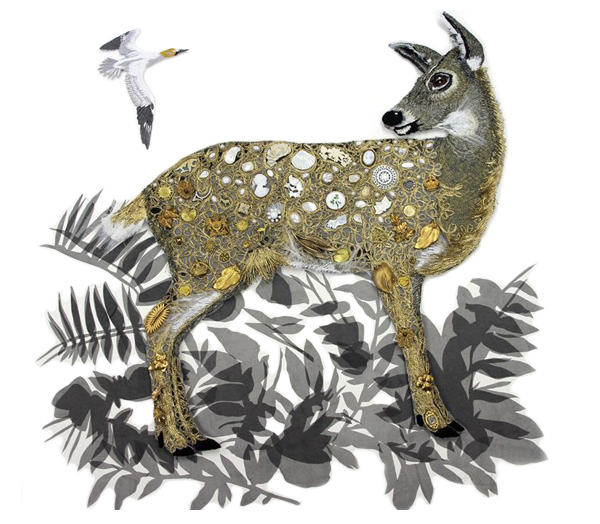
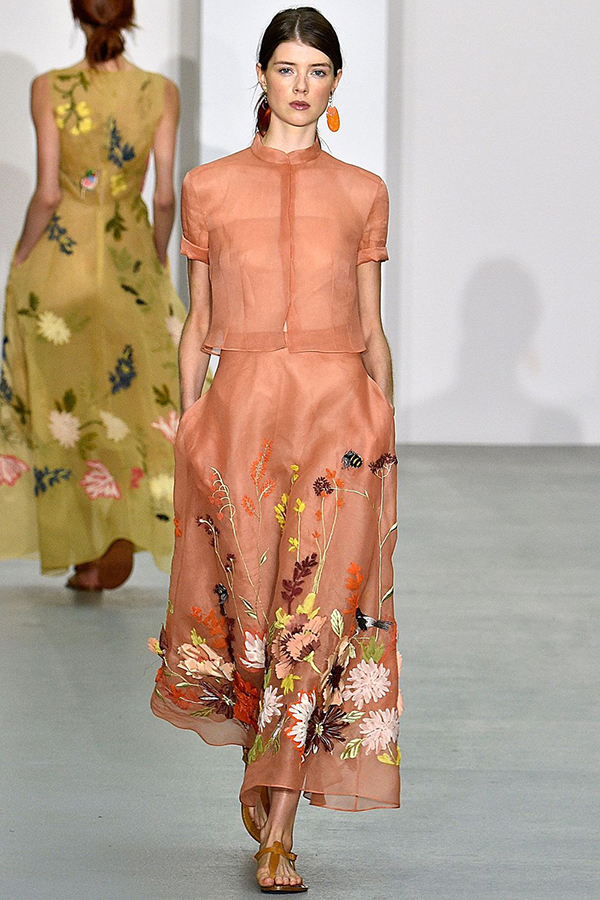
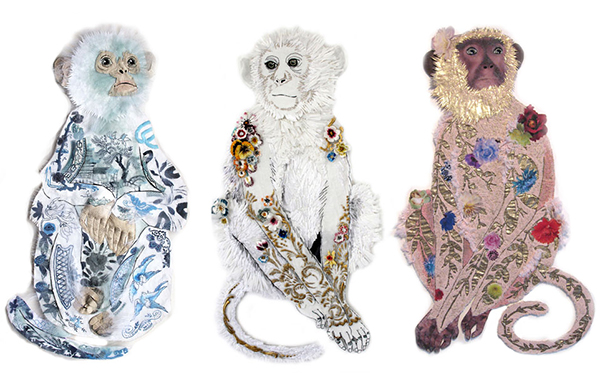
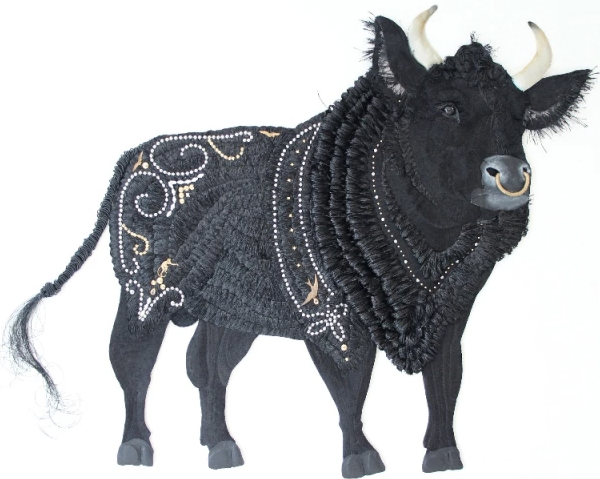
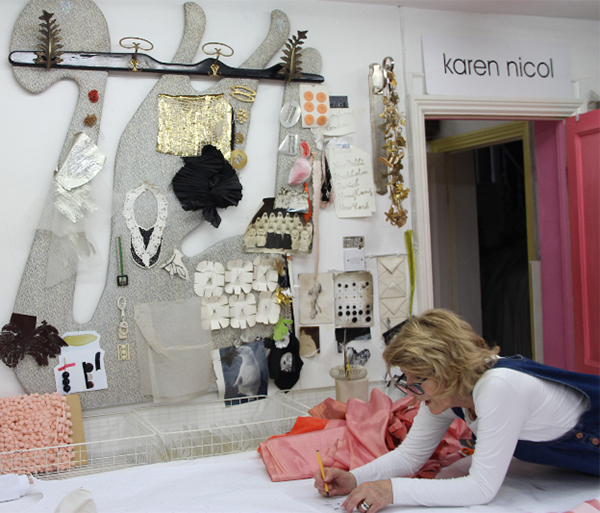
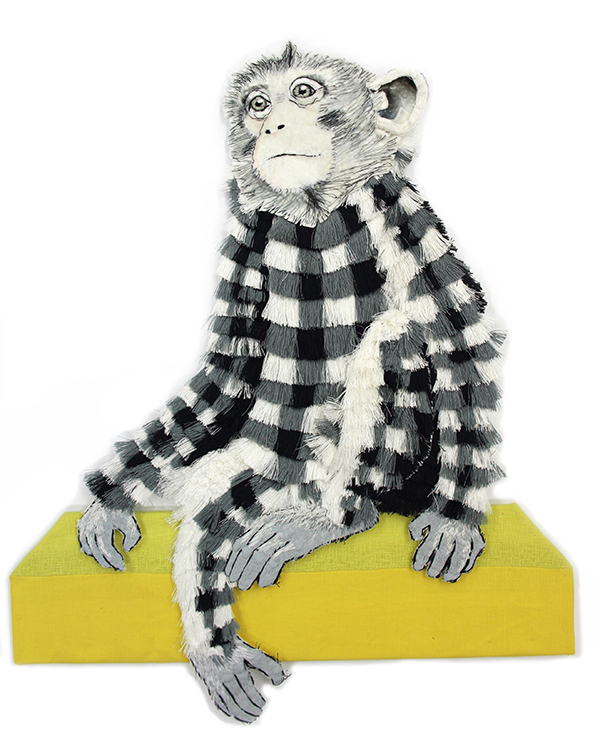
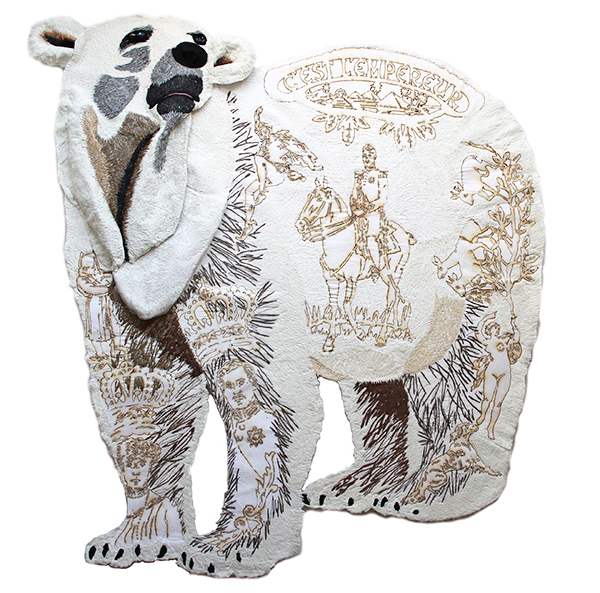

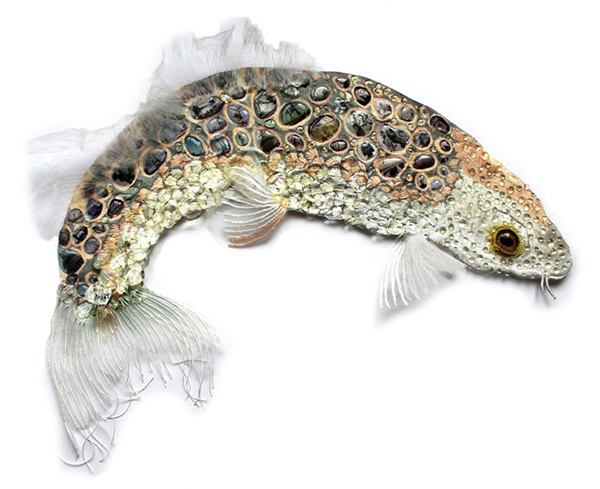
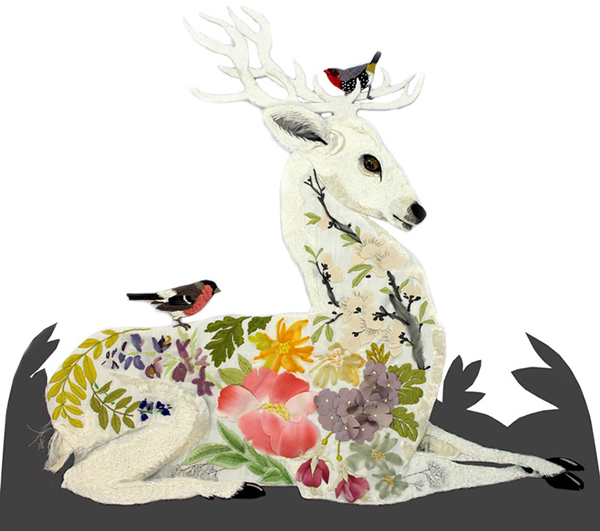
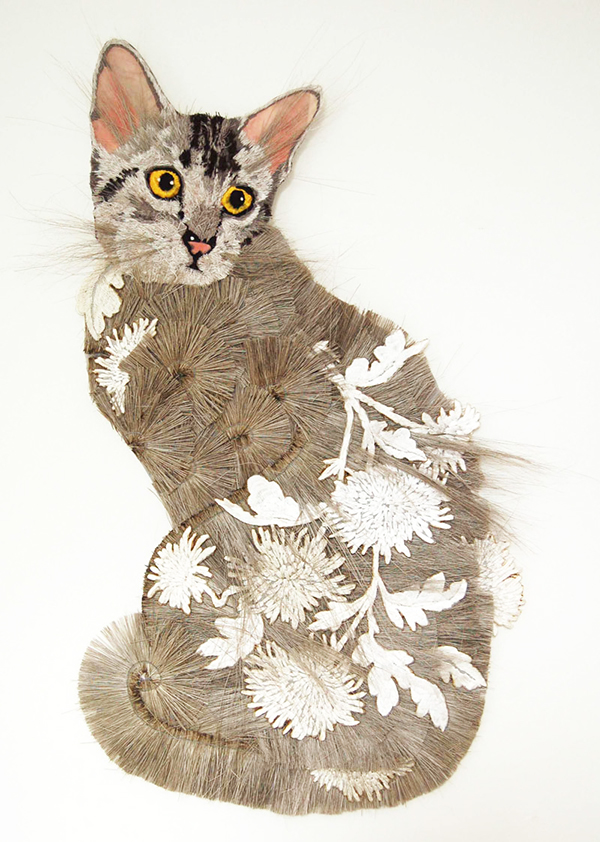
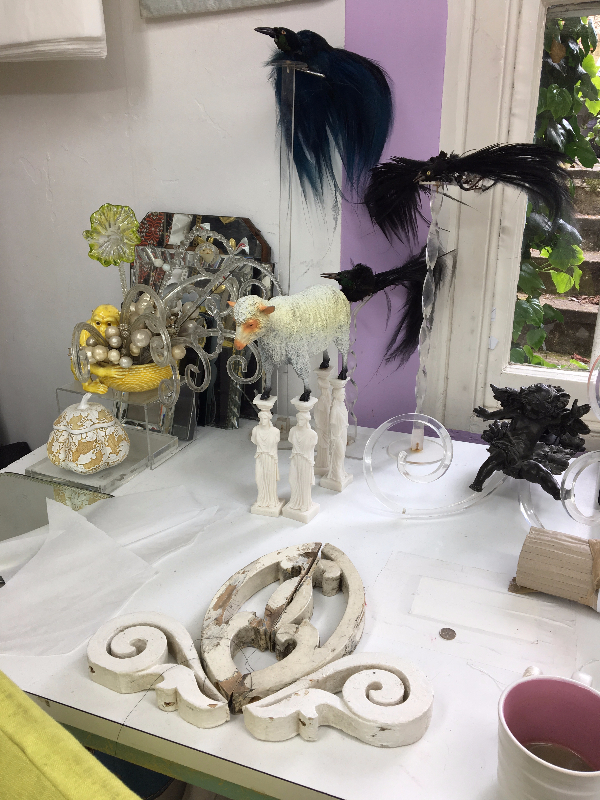

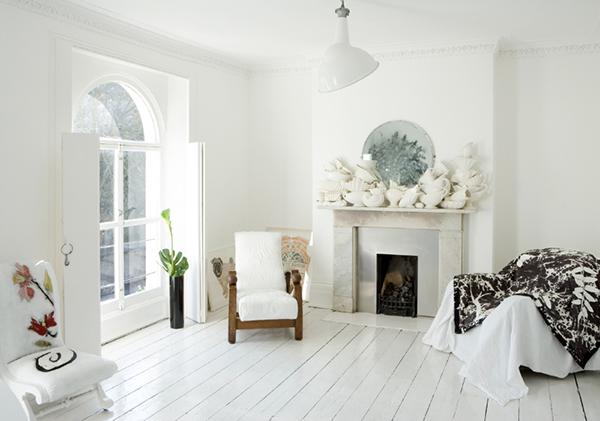
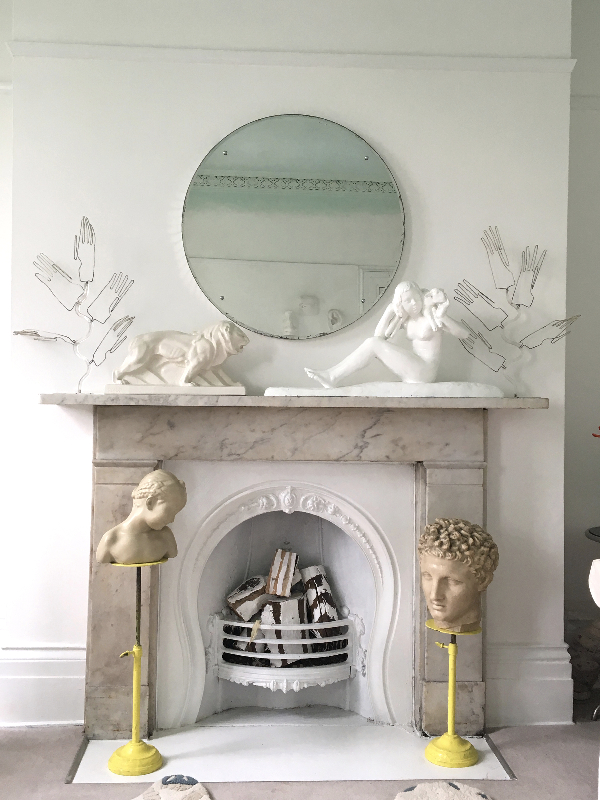
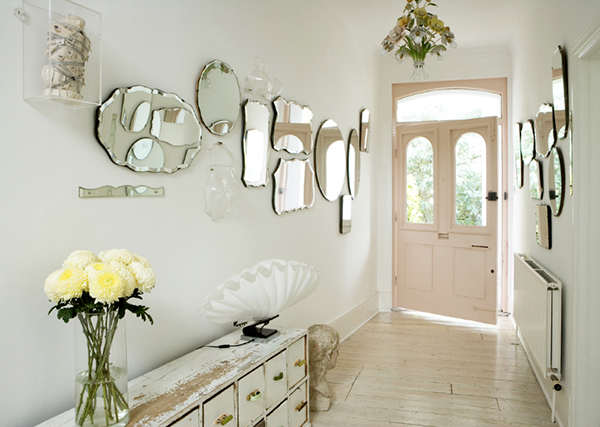
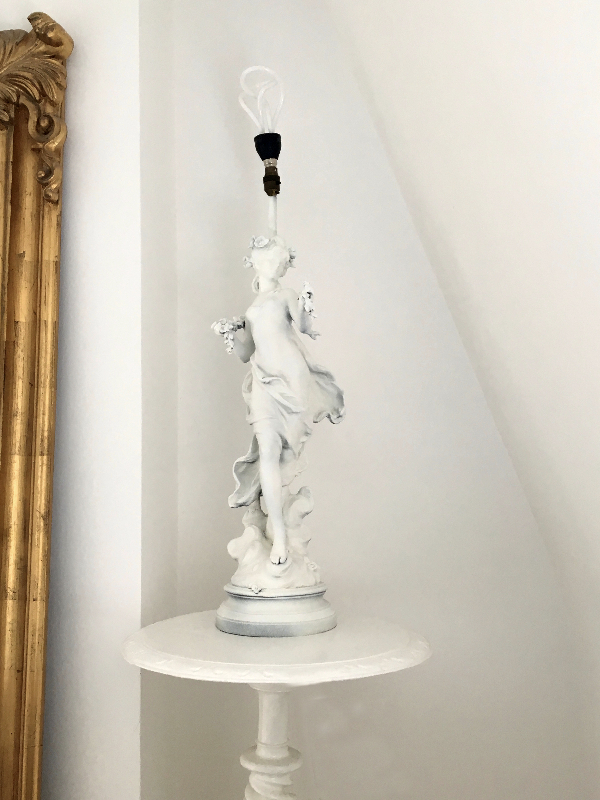
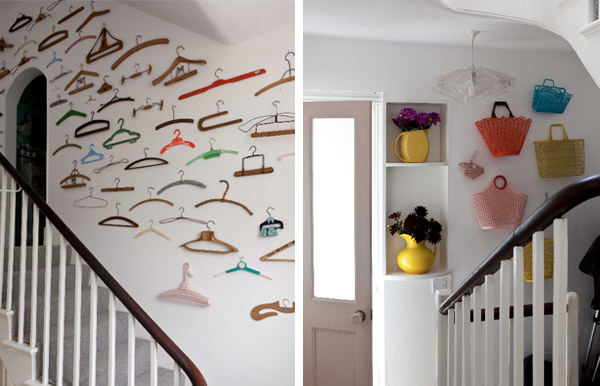
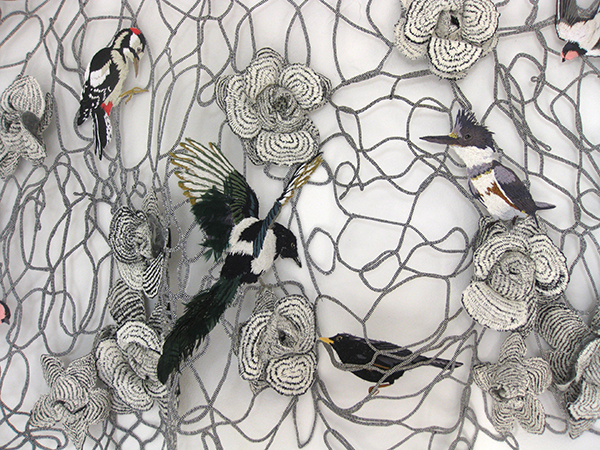




Wow, wow, wow! Incredible pieces, and have given me such inspiration for my own home interior. But you know what? This has encouraged me to be brave with textiles and textures. It’s all too easy to buy from IKEA and leave it at that, but this beautiful art deco work makes me want to embroider over all of that new furniture! I’ll start small, I think!